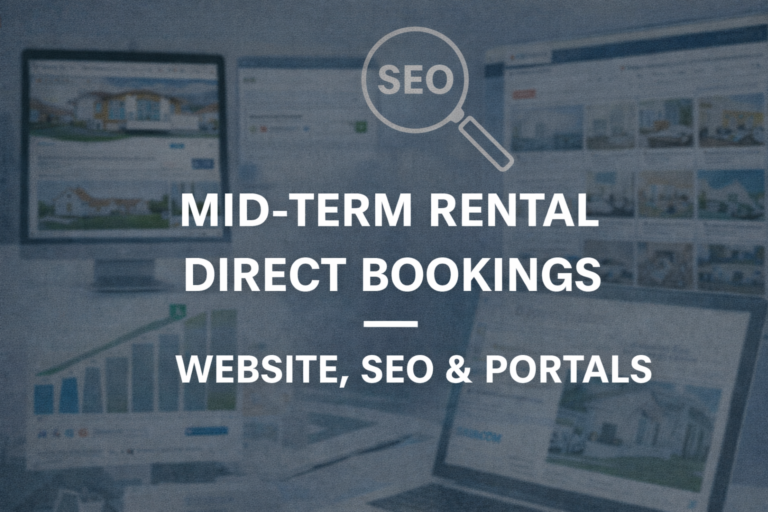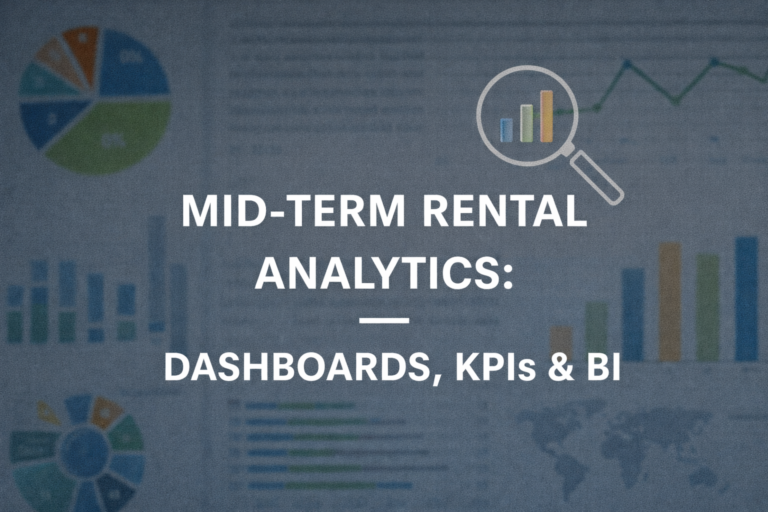Investing in real estate can be a daunting task, especially for first-time investors. It can be challenging to enter the market with zero investments and even harder to make that first investment. This is where mid-term rentals come in as a great option for new investors.
What exactly is a mid-term rental?
Think of it as subletting. These rentals typically involve providing furnished accommodations for a duration of 30 days or more. They cater to various demographics including traveling nurses, corporate employees, individuals going through a divorce, and newcomers to a city who are still exploring different neighborhoods. All these subsets of potential tenants require a temporary place to stay, and mid-term rentals can fill that need.
Now let’s dive into the reasons why investing in mid-term rentals is a smart choice:

- The Financial Aspect: While short-term rentals, such as those offered on Airbnb, may yield higher returns, they come with their own set of challenges like local regulations, the amount of work involved, and potential liability concerns. On the other hand, long-term rentals may seem like an easier option, but they often don’t offer as good of a return on investment. This is where mid-term rentals shine, as they typically provide returns of about 1.5-2 times higher than long-term rentals.
- The Workload: Compared to short-term rentals, mid-term rentals require less effort, but more effort than long-term rentals. With a long-term rental, you simply find a tenant after purchasing the property. However, with a short-term rental, you need to buy a property, furnish it, create appealing listings, and constantly maintain the guest experience. Mid-term rentals fall in between, where the process involves purchasing the property, furnishing it, setting up listings, and having limited interaction with tenants once they move in because they’re often there for 3-6 months not 3-4 days.
- The Commitment: One of the concerns that often hold back inexperienced investors is the fear of commitment. There’s the worry of dealing with nightmare scenarios like long-term tenants causing damages or short-term tenants throwing wild parties. However, these concerns are usually exaggerated. By doing thorough due diligence beforehand, such issues can be minimized. With mid-term rentals, the commitment to tenants is usually shorter than long term tenants, lasting three to six months. This reduces the likelihood of being caught in an ongoing nightmare. Additionally, the turnover rate is limited, meaning less vetting and trust needed for tenants. If you later decide to venture into short-term rentals, transitioning from mid-term rentals is relatively seamless.
- The Demographic: The demographic attracted to mid-term rentals tends to be responsible individuals. They might be professionals like traveling nurses or corporate employees who value the comfort and convenience of a temporary home. Alternatively, they could be individuals facing major life circumstances such as divorce, relocation, or dealing with a loved one’s illness. These situations typically do not lend themselves to wild parties or problematic behavior in rental properties.
- Legal Considerations: While short-term rentals may offer higher financial returns, regulations surrounding platforms like Airbnb differ from city to city. However, across the nation, rentals that exceed 30 days are usually legally allowed. By opting for mid-term rentals, you can avoid any potential legal complications associated with short-term rentals.
As an experienced real estate investor of mid-term rentals, I highly recommend this strategy for all the reasons mentioned above. They provide a lucrative investment opportunity with manageable commitments, attracting responsible tenants in a legal and regulated manner. So, if you’re considering your first real estate investment, don’t overlook the potential of mid-term rentals.
You can list you property for free on the fastest growing platform for monthly furnished rentals at Ministays.com.



